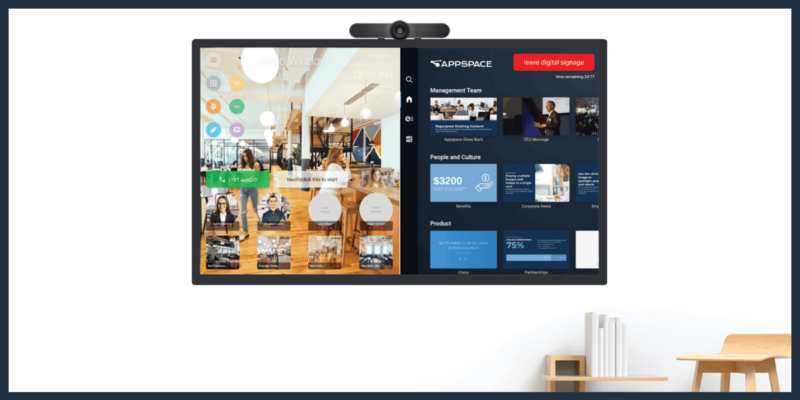Creating Conference Room Standards for AV
 By Pete Kolak
By Pete Kolak
Senior Manager, Conferencing Services (Unified Communications), Juniper Networks
In an era of self-driving cars, self-lacing shoes (thanks, Marty) and privatized space travel, shouldn’t we be farther along with corporate communication tools?
Don’t get me wrong, there’s a lot of great stuff out there but in our corporate search to meet basic needs, sometimes it appears there are few reliable options.
Take for example streaming media. There are a couple of great companies out there, but they force you to the cloud, in some cases, or they are missing vast areas of features. There are limitations on options and worries about sustainability. Then in the world of videoconferencing you have a few choices, some are innovative and others have a clear goal to take over the world by dumping their products in the corporate world for practically free. Just buy their switches 😉
In all this chaos, trying to define room standards for a corporation can be daunting and difficult to achieve. I have the belief that a company should adopt a standard that is implemented to create ease of use, service and a reliable experience for the end user.
Having been in this industry for over 19 years, it’s become obvious that the products have changed, but the same asks and needs are virtually the same. There are several things that need to be considered when defining these standards.
First, you have to define how often you will update your standards once they have been defined. This needs to be decided from the outset or every time a shiny object shows up, you’ll be putting your standards into chaos.
Once your standards are defined, you must set guidelines as to the scenario’s to justify a change.
- Significant feature improvement outside your current offerings. Swapping like features for a different like features does not justify a standard change. There’s complexities and support concerns to just swap for the sake of swapping.
- Significant cost reduction without feature loss. Changing a standard to save a little money is not worth the change if features that are important are lost.
- Consistent technology designs. Staying with the same brands such as Samsung/Sony/LG, Polycom/Cisco, Crestron/Extron, Apple/Android, etc. will allow you to maintain smaller spares count, and provide simpler support for contracts and personnel on the ground.
- Having a goal to eliminate a product or company from your portfolio should only be driven by the company’s stability and relevance in the market place, not because someone somewhere doesn’t “like” a vendor or company.
Set standards update to semi-annually or annually. Updating too frequently creates deployments of different era equipment and becomes a support nightmare.
Supportability is paramount. Any standard’s highest test should be in its ability to be remotely supportable. Most companies don’t have the staff to support AV on the ground. Can you remotely connect, modify and update the system without deploying a technician?
Application based vs. OS based products are always a question. Personally, I am not a fan of OS-based systems and prefer application-based products. Microsoft and other OS makers tend to push updates that can turn a working system into a paper weight or at the very least, missing a few key features. It’s happened to me on several occasions, and I can tell you, it takes weeks, if not months to undo the damage.
I also recommend steering clear of recommending stand-alone products to solve a specific request as it is less manageable and harder to support. This applies to digital white-boarding primarily. There are few options out there, and it is difficult to find one that fits with your standards. Picking a standalone product should be a last resort to meet a customers need, and you should work to design equipment that is integrated with similar products in various experience types.
Avoid consumer grade solutions. If I had a dollar for every time someone demanded Apple TV, I’d be retired. I’ve also heard the age old adage, “Let’s just get a monitor from Costco. We can buy three and still be cheaper.” Those will dog you for eternity, but you simply cite the fact for ease of remote support, the cost of install doesn’t go away and most consumer grade products update software to the point that any control or monitoring becomes useless after the first couple of software patches.
Consider the cost of bandwidth. If you take for example a Lync room system and compare it to a Polycom/Cisco codec, you’ll find that the Lync Room System actually consumes approximately 15 megs in a call. Now, Microsoft will tell you 4 to 5 megs (still, that’s a lot, and the quality is usually far worse), but our internal testing shows anything less than 11 megs and the call would not transmit video in both directions.
If you calculate the cost of bandwidth retail, it will cost about $10/MB per month. Using working days and working hours, you can calculate a 15 meg call to cost about $0.22/hour. That same call using 2 megs on a Polycom/Cisco system will only cost about $0.01/hour. That’s 22 times more expensive for the call. Keep in mind this isn’t actual costs, that’s nearly impossible to factor, but it’s a guide to consider when choosing a conferencing solution.
R&D Efforts should also be focused on the most effective improvements. Several groups get bogged down by what’s the latest and the greatest. Instead, figure out what’s the biggest pain points for your end users. Here’s what I’ve found is an area of focus that should be looked at:
- Auto Camera tracking, to increase visual interaction, and remove user controls. People really don’t want to use the technology, they just “want it to work.” Either that of fixed camera’s with smaller conference rooms.
- Auto mic tracking, like the Shure ceiling and table mic (MXA910 and MXA310) to increase verbal clarity and ease.
- Wireless content share is a common ask, there are solutions, but some companies have network constraints, such as different networks for customers and employees, and the problem of bridging that connection comes down to your information security group.
In conclusion, defining standards for a corporation is a multifaceted approach. You must consider support first, and then pair that with feature sets that meet customer needs.
You will encounter resistance to maintain a standard. Your facilities team will complain about costs, higher ups outside your organization will complain about features, nearly everyone will complain that you’re not using the latest consumer grade product, but, don’t be daunted, you are standing on the right side of the problem if you’re support focused in your solution set. Remember, it costs thousands of dollars per minute (man hours) across a company for people to be bogged down engaging your solution and problems that can’t be solved quickly. So keep it simple, keep it supportable, and don’t be afraid to stand up and voice your concerns.
This column was reprinted with permission from Pete Kolak and originally appeared here.





